- Welcome to Blatchford, Edmonton's environmentally friendly neighbourhood built on the city's old airport grounds.
- The sustainable development features a district energy system that relies on heat stored beneath the Earth's surface to control temperatures in its homes, offices and stores.
- Houses in the neighbourhood are almost entirely carbon-neutral, and Blatchford's green building standards are 50 per cent more stringent than the national building code.
Alexia and Scott Wright spent four years looking for their forever home in Edmonton.
The concept they were seeking — large enough to house their five-year-old son Luca and Alexia’s parents but small enough to be environmentally efficient and in their price range in a core community — seemed impossible.
“We wanted a livelier neighbourhood with more density,” said Alexia. “But the key factor that was always missing was the environmental component.”
The family finally found the right fit in Blatchford, a new, carbon-neutral and sustainable development in an unexpected location — the decommissioned municipal airport lands, just minutes from downtown.

With a cutting-edge but pricey renewable energy system and stringent green building standards, advocates feared the 536-acre project would never take off. But 10 years after plans were first rendered, Blatchford has welcomed its first residents.

Emissions from Alberta make up 37% of Canada's total.

Greenhouse gas-saving initiatives by Alberta cities are a bright spot in the province, which is by far Canada's largest emitter. Emissions from Alberta make up 37 per cent of Canada’s total, thanks primarily to its continued growth in oilsands production. And Alberta stands apart from its peers for having no long-term reduction goals.
Premier Jason Kenney unabashedly joined the fight against the federal government to levy a gas tax on all provinces. When the Supreme Court of Canada ruled against dissident provinces this spring, Kenney vowed to design a pricing system that would be fairer to Albertans but so far has failed to reveal what those plans will be.
There are, however, one or two bright spots. Alberta is moving to eliminate coal-fired electricity, and its 2030 target was recently pushed earlier to 2023. Solar energy from utility-scale plants is also rising quickly but is still well behind natural gas, coal, wind and hydro.
Still, the overall provincial disregard for climate targets hasn't stopped individual cities in Alberta from taking up the challenge to reduce emissions. Edmonton's Blatchford neighbourhood is just one example.
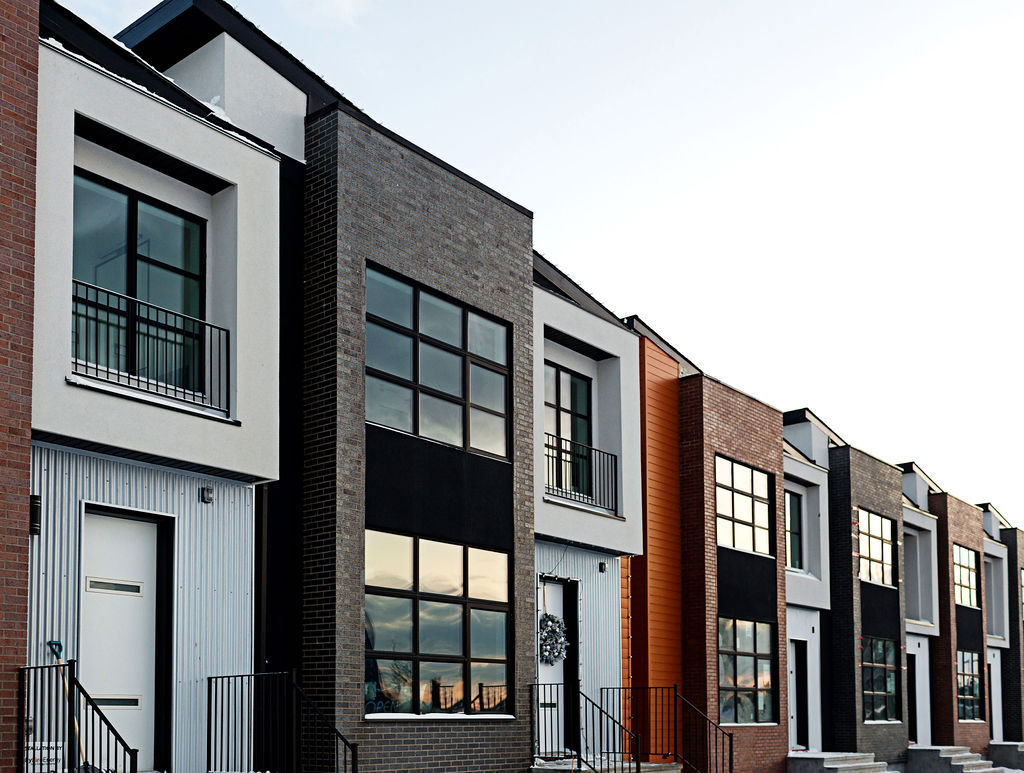
We were getting discouraged as we tried to stay central and green, and then we saw Blatchford was ready for us.
Heather MacKenzie, executive director of Solar Alberta
For Heather MacKenzie, the mother of two elementary-aged children and the executive director of Solar Alberta, density was key when she and husband Justin Wheler, a climate change engineer with the Alberta government, chose Blatchford for their new home.
The family had been living in a downtown apartment. But when COVID-19 struck, they decided they wanted a home with its own entrance and private laundry facilities. Blatchford, the site of Canada’s historic first licensed airfield for 80 years, ticked all the boxes.
“We were getting discouraged as we tried to stay central and green,” said MacKenzie, whose family moved in last winter. “And then we saw Blatchford was ready for us …It was amazing and fortuitous.”
A neighbourhood of the future

It has been a long road for Blatchford, expected to house 30,000 people over the next 25 years. Conceived in 2011 by Vancouver architects Perkins + Will to feature green innovations such as geothermal energy, the project has been dogged by delays, slow home sales and controversy over the watering-down of the original vision.
“I think we went from the Jetsons to reality” is Edmonton Coun. Bev Esslinger’s dry response to the watered-down critique.

Esslinger, whose ward includes Blatchford, notes the development’s design and commitment to carbon neutrality (defined as sending as much renewable energy into the grid as it uses over a year) remain true to the original vision.
The jewel in the Blatchford crown is its shiny new district energy sharing system (DESS), which Esslinger says is a model for wannabe sustainable communities everywhere. The system features a renewable technology known as geoexchange, which draws heat stored beneath the Earth’s surface, and transfers it to a utility station for distribution.
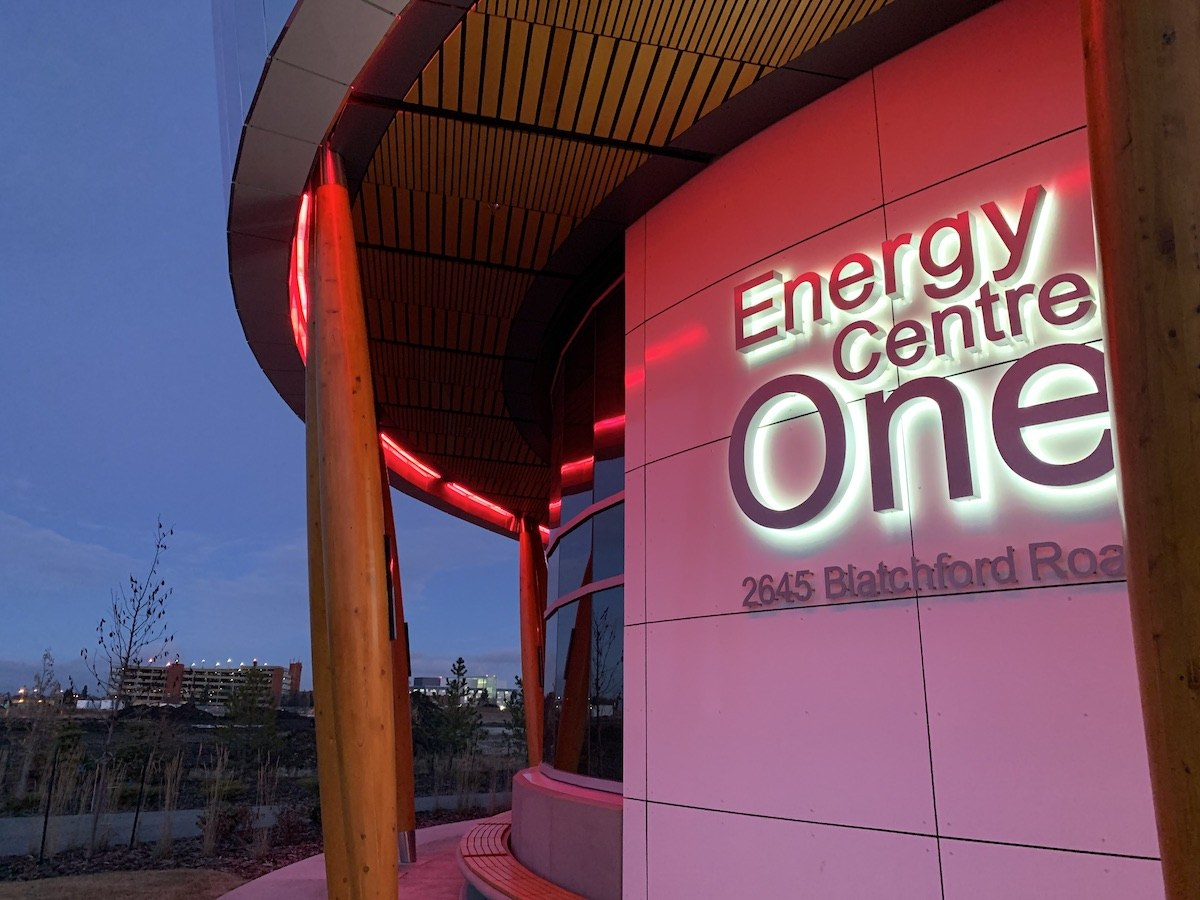
That heat energy is then sent through an underground pipe network to Blatchford homes, offices and stores, where super-efficient heat pumps increase or decrease the temperature as required. Excess heat energy is returned to storage.
Geoexchange has been used elsewhere in Canada, but green supporters say density is what really makes this infill community stand out in a city renowned for ever-increasing sprawl.
Although it's billed as carbon-neutral, strictly speaking, Blatchford is not. Roughly 80 per cent of each home’s energy needs are supplied by the DESS. However, homes without solar panels must draw the last 20 per cent from the electricity grid. Though rapidly evolving, roughly 90 per cent of the grid in Alberta is fired by fossil fuels, with about 10 per cent coming from hydro and wind power.
Phase 1 developers were not required to include solar panels because the city didn’t want to make it “over-the-top expensive to be there,” said Blatchford project manager Tom Lumsden. But as solar energy installations costs drop and efficiency improves, things will change, he added.
Even those homes drawing some energy from the grid will continue to become more energy efficient over time, the city’s renewable energy systems director points out.
“The grid in Alberta is going to get greener,” said Christian Felske, adding that city council’s vision is for Blatchford to be powered by 100 per cent renewable energy over its lifetime.
We can get all hung up on whether it’s carbon-neutral today or tomorrow. In my mind, it doesn’t matter. The vision is there.
David Dodge, journalist, podcast host and Blatchford homeowner
Blatchford’s building standards are 50 per cent more stringent than the national building code, says Godo Stoyke, president of Carbon Busters, one of four developers at Blatchford. High-performance building envelopes, double-studded walls and enhanced insulation mean its structures emit 75 per cent fewer greenhouse gases than those in a typical neighbourhood.
Environmental journalist David Dodge — host of the popular multimedia podcast Green Energy Futures — is scheduled to move into his net-zero Blatchford home (his has solar panels) in December. He isn’t troubled that some homes in his future neighbourhood aren’t perfectly green.
“We can get all hung up on whether it’s carbon-neutral today or tomorrow,” said Dodge, 61. “In my mind, it doesn’t matter. The vision is there.”
Off to a slow start

By Edmonton standards, Blatchford has set a new bar. There are no single-family homes in the works, and while the maximum available zoning is 15 storeys, Lumsden said that could increase over time. All townhomes are zoned for a separate extra suite inside or outside the main building.
Walkability is a key feature and many amenities are already on site, such as an orchard and a playground dotted with whimsical stands of giant, floral-inspired sculptures. The plan features a civic plaza for festivals and markets and a town centre with offices and retail designed to keep people from leaping into their cars in search of fun and groceries.
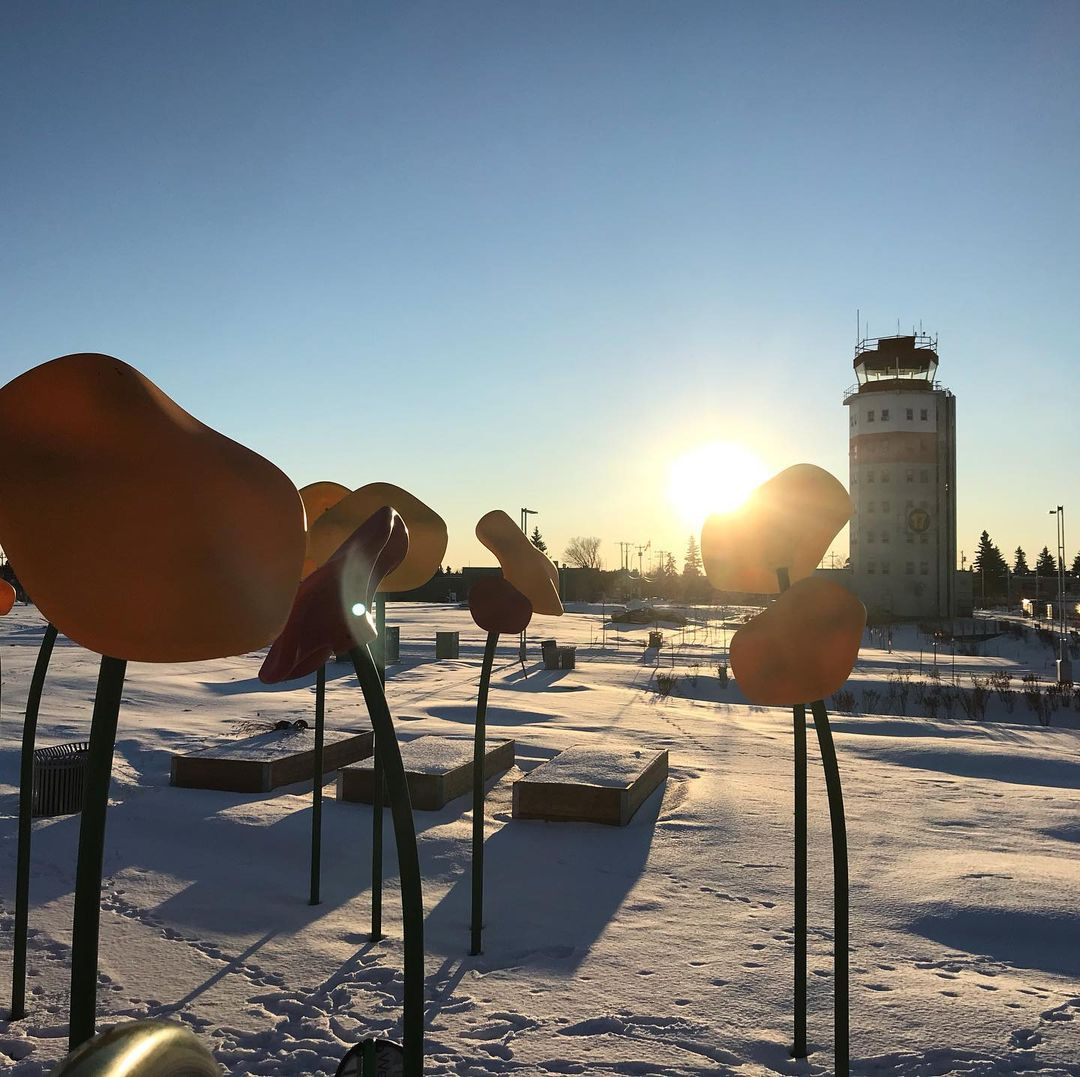
The first of two light rail transit stops that connect Blatchford to downtown Edmonton via the Metro Line is expected to be operational within five years, making car ownership optional.
But although Blatchford’s bona fides are impressive, it’s fair to say homeowners are not exactly racing to be part of its brave new world. Lots have been for sale since 2018, and two years later, are not sold out. A sluggish economy, beset by low oil prices and a pandemic, hasn’t helped.
Edmonton Coun. Tim Cartmell is concerned slow sales are a reflection of the development’s viability. He’s also worried about the high infrastructure cost, which will see the city backstop $510 million of borrowing to build out the DESS. Cartmell points to a further $90-million funding gap, as yet to be covered by the provincial or federal governments, which could fall to city taxpayers.
“When the Blatchford scheme was first contemplated … it was a bold, audacious plan,” said Cartmell. “But the circumstances were different. Times were prosperous and the city was growing by leaps and bounds.”
Cartmell would like expansion of the DESS halted at Phase 2 of the development to make sure it’s all working before committing millions more.
But for the residents who have embraced the Blatchford vision and committed their future to the green dream, there is plenty to celebrate right now.
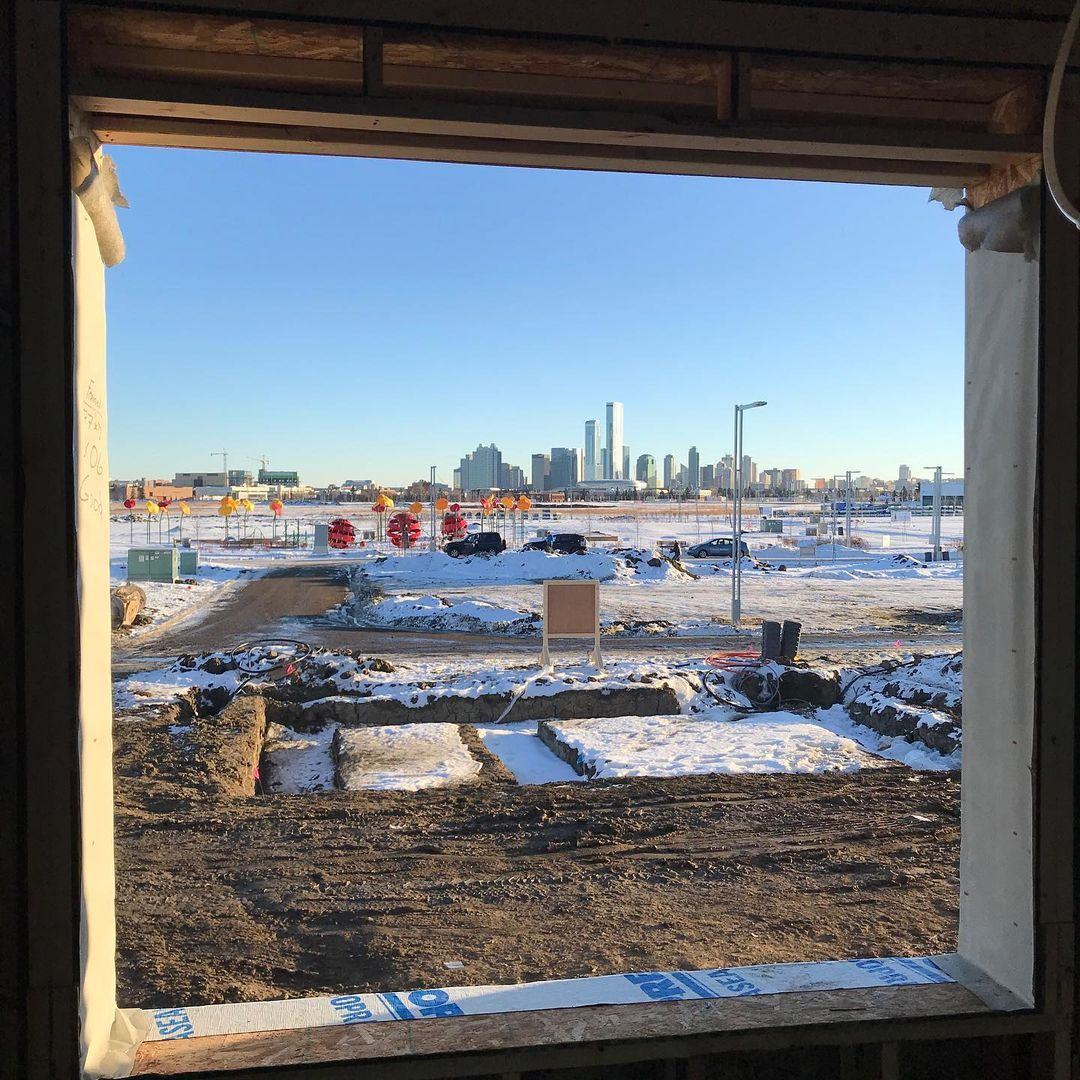
We’re really excited to move into the neighbourhood. We can see the little playground out our kitchen window, and there is a warming hut and an ice rink. It feels like it’s a growing community.
Scott Wright, homeowner
“We’re really excited to move into the neighbourhood,” said Scott Wright, whose family moved into their new home in mid-July. “We can see the little playground out our kitchen window, and there is a warming hut and an ice rink. It feels like it’s a growing community.”
The Wrights were happy to leave their small, tired home on its big lot, where maintenance inside and out was an ongoing issue. They’ve upgraded their new home with solar panels, and are excited that neighbourhood amenities mean they will “lightly use” their car.
They’ve already met four Blatchford couples with children Luca’s age.
“Right now, Blatchford is selling you an idea of what it could be,” said Alexia. “I think we are all moving in there with that thought, and that gives us something in common. That will make us a strong community.”
Those moving to Blatchford have clearly bought into the philosophy of living with a lighter footprint on the planet. But the neighbourhood remains an anomaly in Edmonton which like most Prairie cities has chosen sprawl over density. If Blatchford does succeed, it will help set the tone for future green neighbourhoods and carbon reductions, an example of Alberta cities going down a road the provincial government has been reluctant to tread.





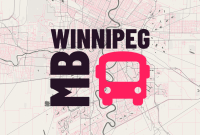

Comments